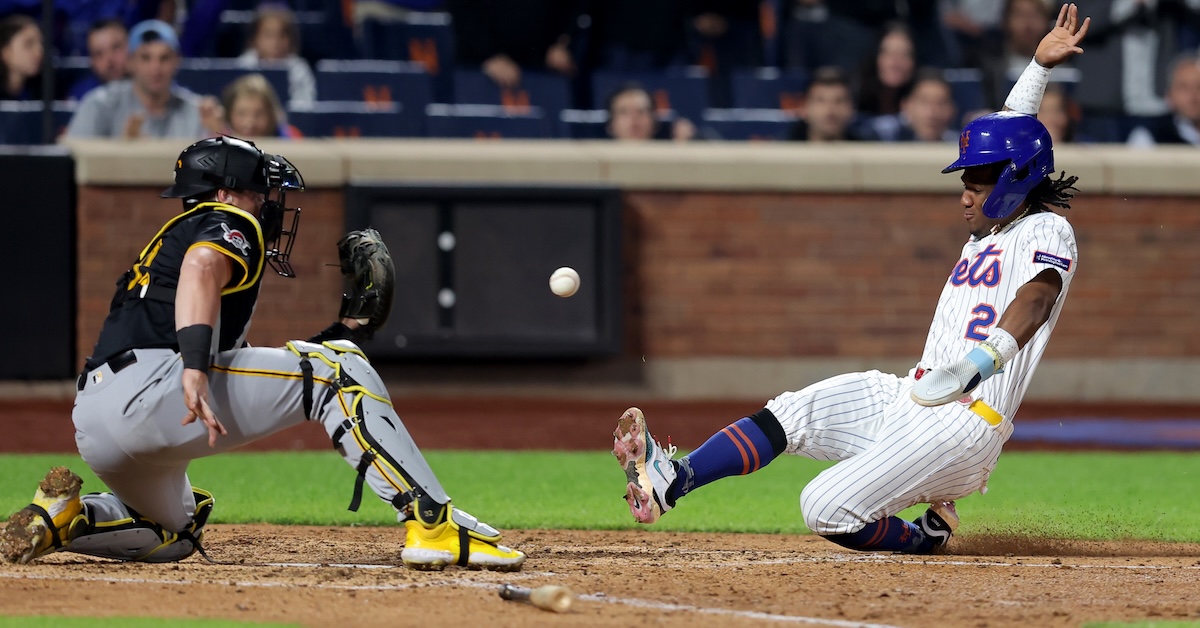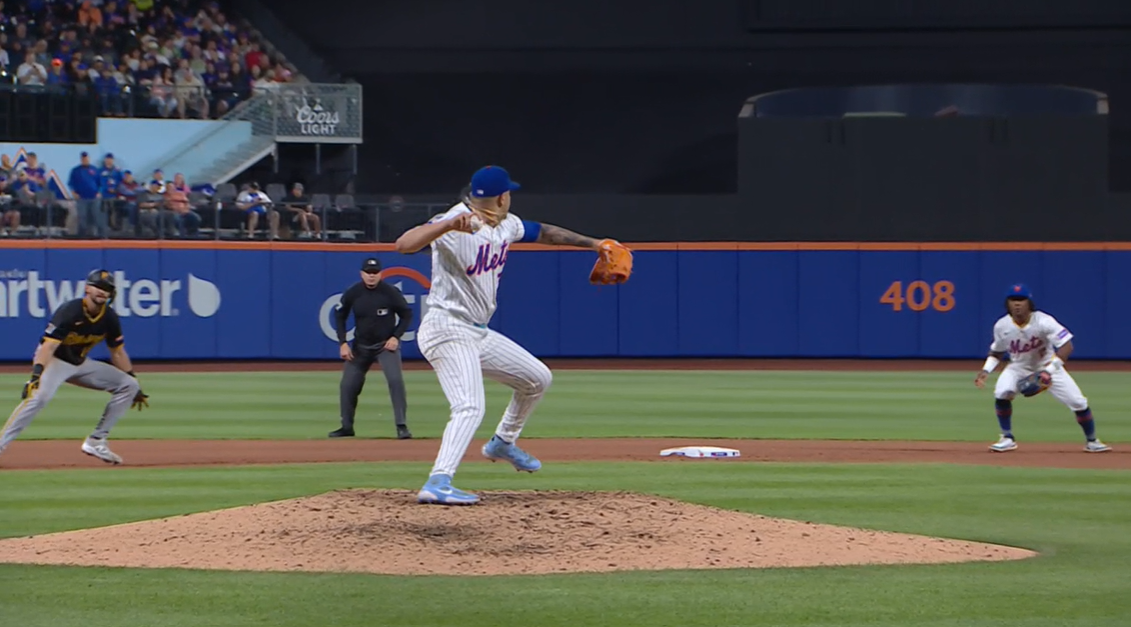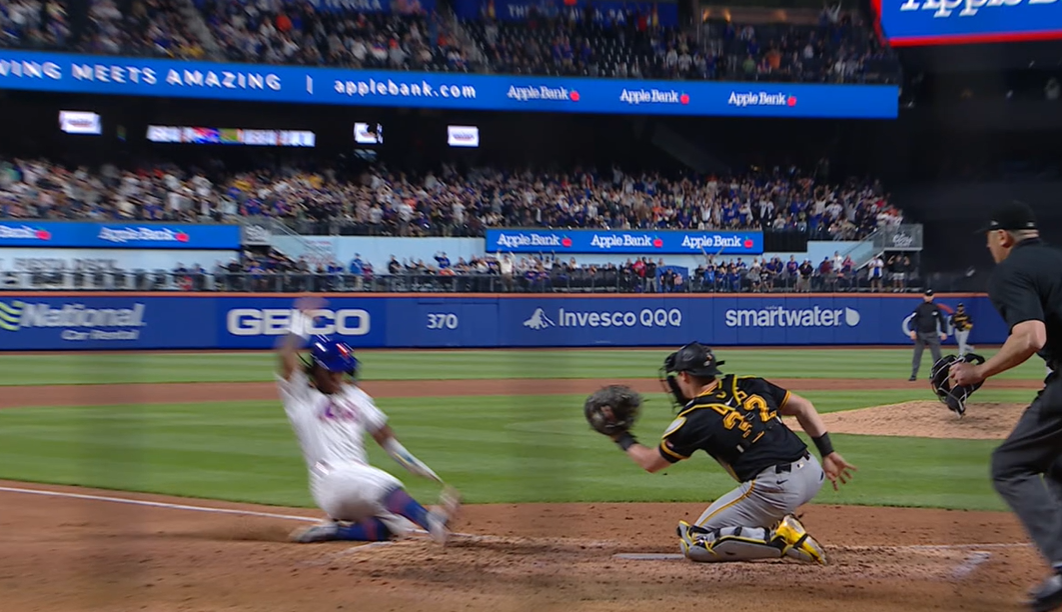Five Things I Liked (Or Didn’t Like) This Week, May 16

Welcome to another edition of Five Things I Liked (Or Didn’t Like) This Week. Actually, the title is a misnomer today. A week of baseball is great, but you know what else is great? A single game of baseball. Monday night, Paul Skenes and the Pirates took on the scalding-hot Mets. It was one of the most exciting matchups we’ll get all regular season, pitting my pick for the best pitcher in baseball against one of the top offenses in the game. This being baseball, the best pregame matchups don’t always lead to the most exciting events. This time, however, the hype was warranted, and the game was both delightful and delightfully weird. So with apologies to Zach Lowe for changing the format he created, let’s try this again: Welcome to Five Things I Liked During The Mets Pirates Game From Monday.
1. My Skenes vs. Your Team
It’s downright crazy how good Skenes is. He’s so fun to watch, at least as long as he isn’t making your team look silly. He throws everything, and all of it is nasty. He drew swinging strikes on five different pitch types, and some of them left batters baffled:
Juan Soto doesn’t look like that very often. But that’s because pitchers like Skenes also don’t come around very often. Seriously, this pitch was 94 miles an hour?! This is unfair:
The Mets hassled Skenes repeatedly throughout his six innings. He surrendered six hits, tying a career high, and walked three. But when there were runners on base, Skenes found another gear. Five of his six strikeouts came with men on. He threw harder, pitched for whiffs, and generally flummoxed his opponents. He’s not always going to allow only one run, but despite the Mets finding occasional cracks in his armor, one earned run felt like a fair result. When Skenes is on the mound, the other team starts at a disadvantage.
Or, well, they at least start at a disadvantage at the plate. Unfortunately for Skenes, he’s backed by Pittsburgh’s 29th-ranked offense. The problem of the Pirates writ large – they aren’t doing enough to support Skenes – is also true on the game level. They have a team-wide 75 wRC+, worse than any individual Mets hitter. After Isiah Kiner-Falefa slugged an early solo home run, the lineup just couldn’t scrape anything else together, even with Mets lefty David Peterson intermittently struggling with command.
The Pirates have scored 31 runs in Skenes’ nine starts – and that’s including a 10-run barrage against the Nationals on April 14. They’ve put up three runs or fewer in each of his last five starts, and that’s in the whole game, not just when he’s in. If he’s not near-perfect right now, the Pirates probably aren’t winning that game. Don’t get too carried away – the Pirates aren’t going to keep scoring only three runs a game in his starts forever – but Skenes has been operating with an incredibly high degree of difficulty this year.
2. Manufacturing a Run
Through six innings, the game was tied 1-1. That’s how a lot of Skenes starts go; no one can really break through, and so things are usually tight when the Pirates head to the late innings. That’s not always a recipe for excitement, but on this night, the Pirates played some small ball. Jared Triolo worked a walk to start the inning and promptly stole second, in keeping with Pittsburgh’s aggressive baserunning tendencies.
Triolo kept the pedal to the metal after that steal. The Mets knew it – but unfortunately for them, they neglected to hire consultant Count von Count to help them plan their defense. José Buttó got ahead in the count and then tried a cheeky pickoff attempt:
That’s one, one throw over to second base. Buttó went back to work on batter Ke’Bryan Hayes, but catcher Francisco Alvarez gave the old glove-dip sign for another pickoff attempt:
That’s two, two throws over to second base, a ha ha! Now, if they’d hired my numbers consultant, the Mets would’ve known to stop with the attempts after this. Triolo started to dance off of second, confident that Buttó wasn’t going to do anything about it:
That’s the behavior of a man who knows his opponent isn’t going to try anything. But Triolo was wrong. The next time he leaned toward third, Buttó went for it:
That’s three, three throws over to second, ah ha ha! Yeah, that’s three disengagements and an automatic balk. I can see why Buttó threw over – Triolo was leaning off second by enough that he looked dead to rights:

But the risk was too high, and it’s hard to pick someone off even when the runner is slightly slow to react. Thanks to a 10-pitch walk, a steal, and the Mets’ reaction to that steal, the Pirates had a runner on third with only one out. Then, Buttó walked Hayes to put runners on the corners. Bryan Reynolds followed with an RBI groundout, giving the Pirates a 2-1 lead:
Could that have been a double play if Luisangel Acuña had been positioned closer to the bag? Maybe, but what are the Mets going to do, not shift against Reynolds? That seems like a poor plan, and even though their defensive strategy didn’t pan out, it’s not like the game was over after this play. Not by a long shot, as it turned out.
3. Roller Coaster Innings
Good news, Pittsburgh fans — the Pirates scored! Unfortunately for them, however, Skenes was done after six innings, and the Mets wasted no time responding to Pittsburgh’s manufactured run in kind. Tyrone Taylor got hit by a pitch to lead off the inning, and he promptly swiped second despite a great throw:
After Acuña singled, the Mets scratched across the tying run with a productive groundout. But they weren’t done. Pete Alonso grounded to third base, and then things got weird:
There’s a lot to unpack here. Hayes normally would’ve been playing back against a powerful right-handed hitter, but Acuña was threatening to take off for third, so Hayes stayed close in case of an attempted steal. His positioning ended up handcuffing him on Alonso’s smoked grounder. He got a glove on it, but couldn’t prevent it from rolling into the outfield grass.
With a timely assist from third base coach Mike Sarbaugh, Acuña realized that the ball had squirted away and broke for home. But Kiner-Falefa unleashed a spectacular throw from shallow left, good enough to get the runner with a clean tag:
As adroitly pointed out by the Mets broadcast, though, Henry Davis wasn’t quite set up for success. The situation called for catching the ball as early as possible and swiping a tag down. The play was clearly close, and if Davis had caught the ball a foot or two earlier in its flight path, he would’ve gained precious fractions of a second to apply a tag. Good defensive catchers tend to set up in fair territory in front of the plate in this situation. But Davis positioned himself behind the plate and caught the ball in foul territory instead:

That gave Acuña an opening, and he kept his body away from Davis’ tag just long enough to nick home plate with his hand and push the Mets ahead, 3-2:
4. Wise Bunts
The Pirates were down but not out, and fortunately the high-leverage arms in the New York bullpen were unavailable, which meant Huascar Brazobán got the save opportunity in the ninth. A single and an error put two on with no one out, and then the Pirates made the rare sacrifice bunt I don’t hate:
This bunt would’ve improved a team’s win probability even with a league-average batter at the plate, and Davis is the no. 9 hitter in one of the worst lineups in the majors. It was a phenomenal sacrifice bunt, too, giving the Mets no chance at either baserunner. They settled for the out at first.
Most sacrifice bunts are bad. I’m sure I’m not breaking any ground there. But this one moved the winning run into scoring position, and it wasn’t that important for Davis to reach base, anyway. Visiting teams win about 40% of the time when the score is tied heading into the bottom of the ninth. They win about 80% of the time when they’re up a run, and 90% of the time when they’re up two. In other words, those first two runs are worth 40% each. The third, the one that Davis represented, is worth only 10%.
An out is a heavy price to pay, but because the trade-off here was increasing the likelihood that the lead runner would score to tie the game and the go-ahead run would get into scoring position, the total base advancement was worth it. Don’t believe me? Just ask our WPA Inquirer, which assumes average hitters at the plate. And again, Davis is not an average hitter. Factor his career .276 OBP and 29% strikeout rate, and the decision to bunt gets even easier. Yes, in nearly every situation, voluntarily sacrificing an out doesn’t make sense. But give the Pirates credit for a good decision here, and it ended up working out for them. The tying run scored on yet another ball that didn’t leave the infield:
5. Last Licks
The Pirates were playing this game like the plucky underdog from every baseball movie in history. Their phenom had done his part, keeping the score low early. Their bad offense hadn’t been good, but it had played scrappy. They’d turned a walk into a run by taking two bases off the pitcher. They’d turned a Mets error into a run with a sac bunt. They were barely hitting the ball out of the infield – and yet they’d tied the game in the ninth and had a chance to send it to extras. In the Hollywood version, they’d win it in the 11th.
This wasn’t Hollywood, though. The Mets had scored their two runs with small ball antics of their own. Dinking and dunking is all well and good if it’s your only option, but the Mets didn’t need to do that in the ninth. Instead, they had a better plan: Employ Francisco Lindor, Juan Soto, and Pete Alonso. Lindor started things off with a fluky single:
“Hey, Ben, that’s an error,” I can hear you saying. The official scorer initially agreed with you and ruled it as such. But the ball actually clipped second base for a micro-redirection:
An inch either way, and things would have gone differently. Hit the base squarely, and the ball would’ve slowed down long enough for an adjustment. Miss the bag completely, and it would’ve been just a normal grounder, a short hop right into the glove. But it hit the corner of the base, and Kiner-Falefa wasn’t able to make what would have been a spectacular reflexive adjustment.
From there, the Mets got more conventional. Soto did Soto things:
And Alonso was strong enough to end it:
Great camera angle from the SNY broadcast, for the record, to show Lindor’s foot on the bag in the same frame as the catch — wonderful innovation.
Was this the game of the year? Probably not. But it was very exciting, even if you only looked at the box score. Take a look at the twists and turns in the late innings:

And that’s just the results of the plays, not the way they happened. A three-disengagement balk off of second? Scoring from second on an infield grounder? A deflection off of second base with an infielder five feet from the ball? Not only did Skenes vs. Sluggers live up to its billing, but the game got even more exciting after that. So let’s call it the official Five Things Game Of The Year For Now, and see if anyone can top it this summer.
Ben is a writer at FanGraphs. He can be found on Bluesky @benclemens.

I know there was a theme to the list, but deGrom/Brown last night doesn’t make the list? That was just a classic old school pitchers’ duel. Have to wonder when is the last time there was a game where both starters went 8 and gave up 0 or 1 run and less than a runner per IP.
Please don’t spoil next week’s list.
You left out that Jake Burger provided all the scoring, too!
BURGER IS BACK, BABY!